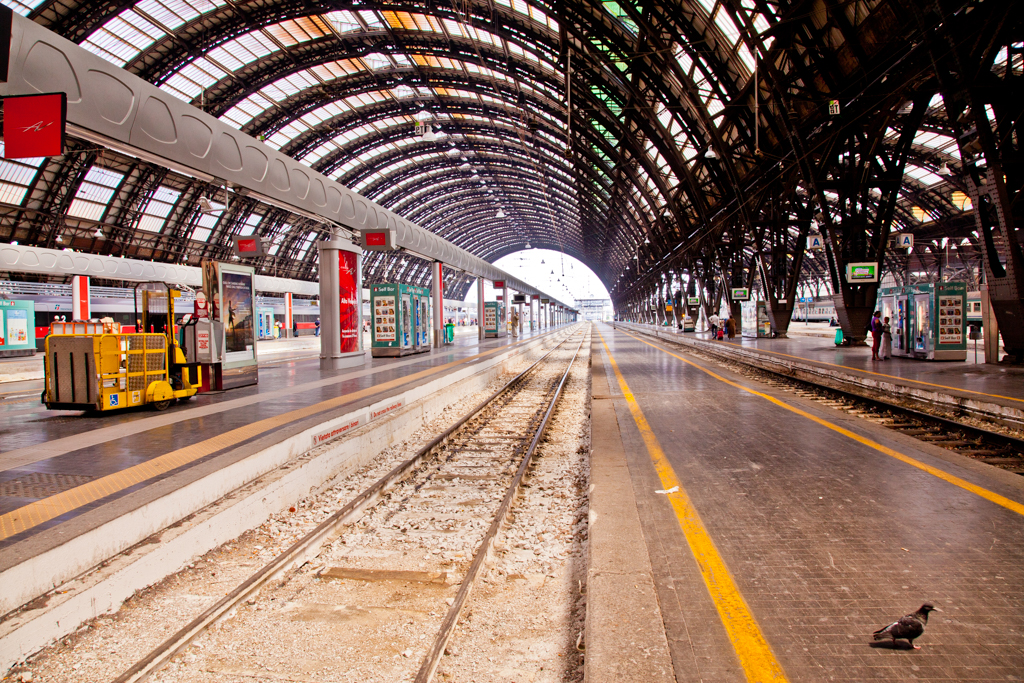Why do we Stare?
writer: russell j.t. dyer; posted: jul 2009; revised: mar 2018
This photograph was taken at the central train station in Milan, Italy with a Canon 5D Mark II camera using a Canon 24-105mm f/4 L Lens, with the focal length at 24mm. The shutter was open for 1/60 of a second; the aperture was at f/10; the ISO sensitivity was set to 400.
If you’ve been reading books on photography, you probably know already about the concepts of composing photographs based on a simple layout calculation. I’m referring to the rule of thirds and the golden rule. You probably also know that if a shot has certain patterns or lines, it’s more interesting looking. I could go on about how to compose a photograph to make it more appealing to the eye — and I intend to do that in a series of articles on this site. However, this is a musing. I’m interested in why photos composed in such a way or containing certain elements are appealing. Why are drawn to them, why do we stare at them?
Look at the photograph on the right. I took it at the Central Station in Milan, Italy. I think it’s a good photograph even though I took it. The convergence of the railroad tracks, the embankments and yellow lines on each embankment, draw the eyes into the photograph and generate interest. The addition of the metal arches overhead wrapped in glass and the converging of the arches to the same point in the photograph generates more interest. Everything seems to point in the same direction. What’s more, the point of convergence is a bright, white or overexposed zone of the photo. Not only that, the convergence point is off center — the photo has reoccurring symmetry and at the point in which the symmetry comes together, we find ourselves off-center, asymmetrical. This is a bizarre result which could lead us to reexamine the photograph multiple times, subconsciously trying to get it right. Although we never do get it right, it feels numbly right in the end.
When we let go of trying to make it right, we then notice the pigeon in the foreground and wonder how he fits into it all. He doesn’t. Or is he another viewer? Birds like this one see from the sides of their head, not forward of their heads like humans. So in this shot, the pigeon is looking down the tunnel, looking at the lines of convergence as are we. Is he subconsciously trying to resolve the scene? His head is extended forward, so maybe he’s walking or maybe he’s peering into the convergence.
Besides getting caught up into following the lines and looking to the convergence, what is the allure of such a photograph? What does it subconsciously, intuitively say to us? Why do we end up feeling numb in the end? Maybe numb isn’t quite right. Maybe a better word is peacefulness; the photo leads to a feeling of peacefulness. It’s said that Budha sat down in front of a wall and found enlightenment. Maybe the wall was made of bricks with converging lines.
